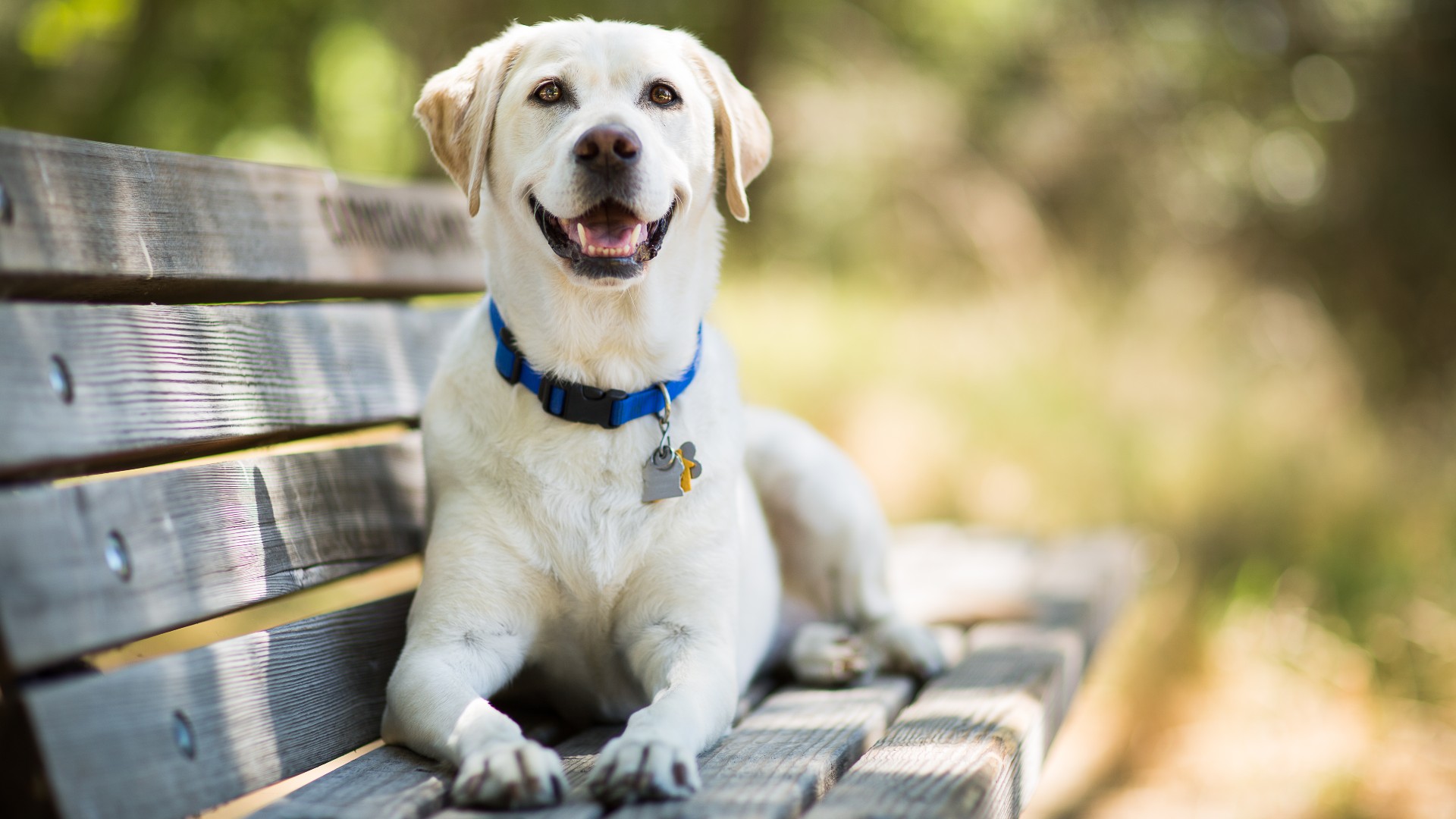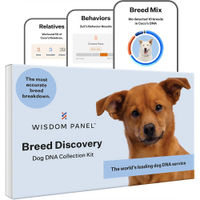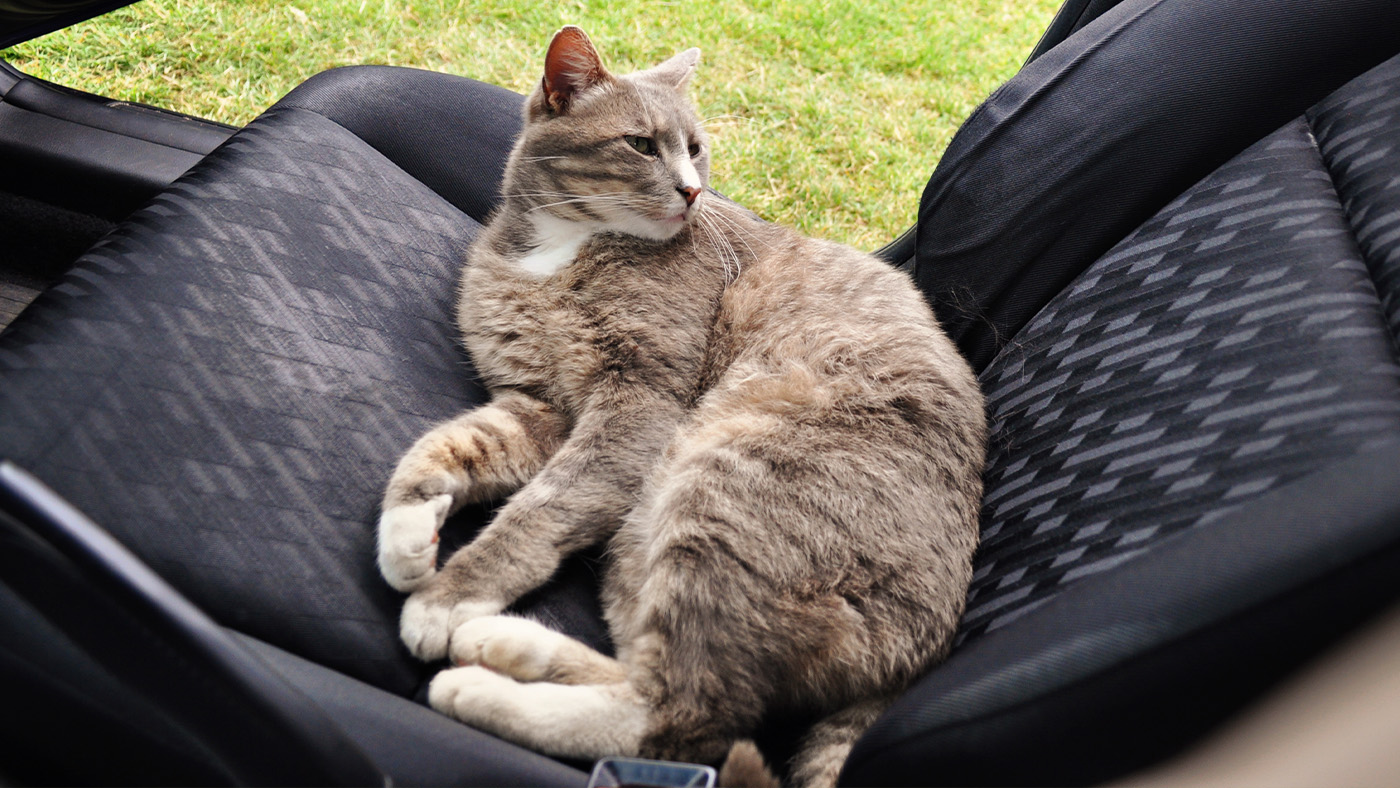Labrador Retriever: Breed profile
The even-tempered Labrador Retriever makes an intelligent, loving, and gentle companion - just make sure you've got plenty of time to spend with this high-energy hound!

Life expectancy: 10-12 years
Average weight: Male: 80lbs/36kg Female: 75lbs/34kg
About the same as: Four car tires
Exercise level: High
The Labrador Retriever is among the most popular dog breeds in the US and it's easy to see why. They're gentle, kind, loyal, and obedient and are one of the best family dogs around. They're also easy to train, which is why they're perfect for assisting people with disabilities or for working with law enforcement agencies. They are also one of the best dog breeds for hunting.
These dogs are registered in three colors: chocolate, black and yellow. There are also two types: the working American type and the English type that are bred for show. The former tend to be slimmer and more athletic-looking, with a narrower head, thinner coat, and greater height (albeit by mere inches) due to their long legs. English types appear heavier and have thicker necks.
Both originated in Newfoundland, Canada in the 1500s when small water dogs were bred with Newfoundlands to create the (now extinct) St John's Water Dog. They became popular among fishermen who would use them to retrieve fish and nets from the water and they were imported to the United Kingdom in the 1830s for use as gundogs. Cross-breeding in the 1880s established the Labrador Retrievers and they were imported into the United States in the 1900s when people recognized their ability to hunt.
How much exercise does a Labrador need?
Labradors are lively dogs with bags of energy so if you want a happy canine – as well as a content home life – then you'll need to keep them active every day. Although you should take extra care with puppies whose joints can be damaged if they exercise for too long (twice a day at five minutes per month of their life will suffice), adult dogs can be let loose. They'll find their own natural exhaustion point so let them take the lead to some extent but aim for about two hours a day.
Exercise helps manage a Labrador's weight and this is vitally important because they are prone to overeating and packing on the pounds. The good news is that they're playful dogs that love to retrieve so a good run around will keep them trim. Grab a ball or a frisbee or another of the best dog toys, head to the park and have some fun games of fetch with them, or simply have them accompany you on runs if you're feeling particularly energetic too. These are dogs that get you on your feet.
What's more, if you've introduced your Labrador Retriever to water at a young age, then you'll find they love to swim. These dogs were once bred to work with fishermen, so splashing around and swimming is second nature to them. Just keep an eye on Labradors if they're plunging into rivers and the sea (just as you would with all dogs) – and get a bath running at home when you get back if they decide a muddy puddle will suffice.
Are Labrador's easy to train?
Suitable for: Families and energetic people who have time to lavish tons of attention on their dog
Not suitable for: Owners who don't have much indoor and outdoor space and are time-poor
Temperament: Even-tempered, intelligent, trusting, kind
Shedding: Heavy
Look at the roles that Labradors have played over the years. These willing animals are one of the best service dog breeds. They can work as search-and-rescue dogs, detect substances and act as loving and loyal guide dogs (here’s how to train a service dog) . Indeed, they were bred to retrieve items for humans and they will, as we've seen, naturally want to fetch.
But are they easy to train? Well, yes and no. While Labradors are eager to please, you will still have to work hard, starting training as soon as you possibly can. But if you socialize them from a very young age, familiarize them with children and other animals, and keep them active, then Labradors are likely to prove receptive. The key is to stop them from becoming bored.
To that end, stimulate their minds with toys and chews and use positive reinforcement methods to help keep their training on track. Consider crate training, practice basic obedience commands, and give them a few of the best dog treats for a job well done. The latter is the ace up your sleeve because Labradors are hugely receptive to treats. Just keep the rewards small to avoid causing obesity.
Are Labrador's good with kids?

The Labrador Retriever makes for a great family pet and is among the best breeds to have around children. Even so, that statement comes with a caveat. The boundless energy of this breed coupled with the dogs' size and strength means you should still be cautious about leaving kids alone with them. They're not dangerous animals, far from it – quite the opposite in fact – but they are bouncy by nature and accidents can happen.
What makes Labradors special, however, is their even temper. They're also sweet-natured, sociable, and affectionate. They adore being around humans and they'll form strong bonds with family members and if you train the Labradors well enough then they'll certainly put up with the pokes and prods of curious young and playful humans. Indeed, they are likely to lap up the attention they're getting and will reciprocate by being friendly and loving.
What do Labrador's eat?
Maybe a better question here would be 'what don't they eat?'. That's because Labradors have a very strong appetite and if you leave the best dog food out for them all day, it's not going to last that long. You should be aiming to give them about three cups of high-quality dry dog food a couple of times a day and supplement it with a few of the best dog chew toys. That way, they may be less inclined to root through a kids' toy box or rummage in the bin for other morsels to get their chops around.
Interestingly, there may be a reason why Labradors always seem hungry. In 2016, researchers at the University of Cambridge discovered a genetic variation associated with obesity and appetite in the breed. In a study of 310 pet and assistance dog Labradors, they found that a variant of the gene POMC has a significant effect on how the breed recognizes hunger and the feeling of being full after eating. “Carrying this variant may make dogs more motivated to work for a titbit,” said the study's senior coordinator Dr. Giles Yeo.
Does the Labrador bark a lot?
Quick answer: No. Labradors are easily socialized dogs, so they're not as prone to barking if you train them well. That isn't to say they never bark, however. If these dogs want to get your attention, then they'll make a noise and, if they become bored then, again, these intelligent animals will bark.
But as you can imagine, the fix for both is easy enough. Keep the dogs mentally stimulated by buying them plenty of toys and they'll stop playing up. It's also a good idea to actively ignore an attention-seeking bark because Labradors are clever enough to work out that they'll be able to get what they want from you on command.
Are Labradors aggressive?

They aren't known to be, particularly if they're bred from non-aggressive parents and have been socialized well. As such in general, the Labrador Retriever is cooperative, friendly, confident, and intelligent. You're certainly not going to have too many problems with a Labrador around the house and that's a scientific fact!
Want proof? Well, in 2008, a study into the breed differences in canine aggression came out very favorably for Labradors.
“Golden Retrievers, Labrador Retrievers, Bernese Mountain Dogs, Brittany Spaniels, Greyhounds, and Whippets were the least aggressive towards humans and dogs,” the academic paper concluded. What more can be said?
Does the Labrador Retriever shed a lot?
Amount Of Shedding: Heavy
Easy To Groom: Yes
General Health: Good
Potential For Weight Gain: High
Yes. Lots. And lots. And lots. There's no getting around the fact that you’ll need to invest in one of the best vacuum cleaners for pet hair to rid your home of fur if you own a Labrador. It also helps to invest in some brushes to regularly groom them too. It's all due to the breed having a dense double coat but if you're able to remove as much hair as you can each day (going from head to tail using a firm stroke) then it becomes much less of an issue.
Grooming, however, is easy enough. You don't need to cut their hair and you only need to consider bathing a Labrador every couple of months unless they are prone to getting dirty by rolling around in the mud. Otherwise, ensure their teeth are brushed three times a week (it wouldn't harm to do so daily) and keep their nails trimmed. Give a Labrador the once over by checking ears and eyes and they'll look and feel great.
Wisdom Panel Breed Discovery DNA Kit | Amazon
Not sure exactly what breed your dog is? This kit screens for 365+ breeds – because knowing every detail about your dog helps you understand how best to care for them.
Labrador health problems
Labradors are generally healthy dogs, but there are some common concerns that you should be aware of. The main one is hip dysplasia, a condition that affects many breeds of this size and happens when the head of the thigh bone doesn't fit properly into the hip socket, causing it to grind.
Labradors can also suffer elbow dysplasia and cranial cruciate ligament disease, the latter being a rupture caused by the weakening of ligament fibers over time. Watch out too for eye conditions, particularly progressive retinal atrophy and cataracts. And above all, look to prevent their overeating. Obesity is the most common condition for Labradors.
Should I get a Labrador?
So long as you have enough space and can spend time mentally stimulating and exercising them, then absolutely: you'll be richly rewarded if you have a Labrador retriever around the house. They crave human company and lavish you with love. They'll also get you off your seat and motivate you with their boundless energy. Quick to learn, they'll show their intelligence and adaptability, too, and because they don't require much grooming, you'll have more time to enjoy their company and goofiness. Definitely consider them.
Want to know more about this breed? Here are our favorite Labrador Retriever facts, and our top reasons to love Labradors
PetsRadar Newsletter
Get the best advice, tips and top tech for your beloved Pets

David Crookes has been a journalist for almost 30 years and he has written for a host of magazines, newspapers, websites and books including the World of Animals Annual, BBC Earth, Live Science, The Independent and Tom’s Guide.
Born in England, he lives with two cats but he’s also keenly interested in the differences between the huge number of dog breeds – in fact, you can read many of his breed guides that he’s written in collaboration with vets here on PetsRadar.
With a lifelong passion for technology, too, he’s always on the lookout for useful devices that will allow people to keep their pets happier and healthier, and provide them more time to spend together.
David has a degree from Durham University, as well as postgraduate diploma in journalism from the University of Central Lancashire.

